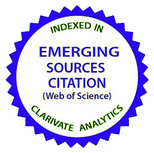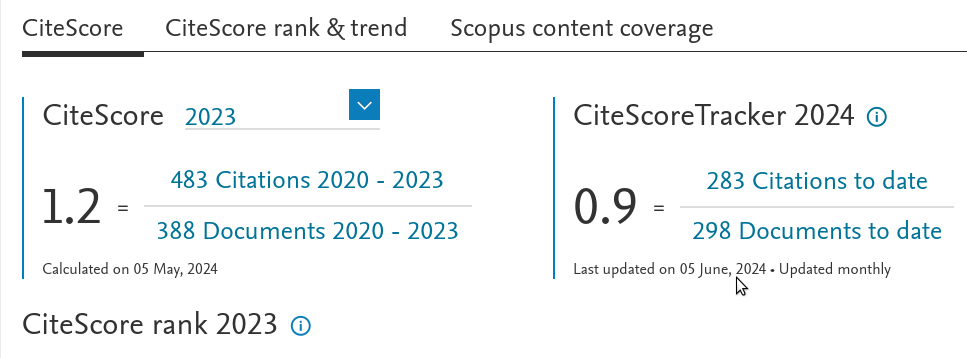Comparisons of the Efficiency of Excitation Energy Transfer by Singlet and Triplet Excitons in Carbazolyl-Containing Polymers
DOI:
https://doi.org/10.15407/ujpe63.01.0025Keywords:
carbazolyl-containing polymers, sensitized phosphorescence, energy transfer, singlet and triplet excitonsAbstract
Luminescence spectra of poly-N-epoxypropylecarbazole (PEPC), poly-N-epoxypropyle-3,6- dichlorocarbazole (DClPEPC), and poly-N-epoxypropyle-3,6-dibromocarbazole (DBrPEPC) films, both pure and with the bis[2-(2′ -benzothienyl)-pyridinato-N,C3′ ](acetylacetonate) iridium (Btp2Ir(acac)) admixture, polystyrene (PS) films with the Btp2Ir(acac) admixture, and composite films of PEPC with the benzophenone and Btp2Ir(acac) admixtures have been studied. Those polymers are promising for their application in optoelectronic devices. It is found that, in the case of PEPC matrix, the excitation energy is transferred both via singlet excitons (through migration and long-range dipole-dipole interaction) and triplet ones (due to the migration and short-range electron exchange interaction). At the same time, in the films based on phosphorescent DBrPEPC, the energy transfer is only provided by triplet excitons. It is found that the quantum yield of the sensitized phosphorescence for Btp2Ir(acac) molecules in the carbazolyl-containing polymer matrix is lower than that under their direct excitation in the PS matrix. For the PEPC-based composite, this parameter is found to be three and five times higher than that for the DClPEPC and DBrPEPC matrices, respectively. The additional doping of the PEPC-based composite with benzophenone gave rise to the transformation of some singlet excitons into triplet ones and, as a result, to a reduction of the sensitized Btp2Ir(acac) phosphorescence intensity. A conclusion is drawn that, during the migration, some of both singlet and triplet excitons became localized in the tail energy states, and a certain fraction of triplet excitons is trapped by polymer oxidation products.
References
<li>J. Kido, K. Hongawa, K. Okuyama, K. Nagai. White light-emitting organic electroluminescent devices using the poly(N-vinylcarbazole) emitter layer doped with three fluorescent dyes. Appl. Phys. Lett. 64, 815 (1994).
<a href="https://doi.org/10.1063/1.111023">https://doi.org/10.1063/1.111023</a>
</li>
<li>Y. Kawamura, S. Yanagida, S.R. Forrest. Energy transfer in polymer electrophosphorescent light emitting devices with single and multiple doped luminescent layers. J. Appl. Phys. 92, 87 (2002).
<a href="https://doi.org/10.1063/1.1479751">https://doi.org/10.1063/1.1479751</a>
</li>
<li>Y. Kawamura, K. Goushi, J. Brooks et al. 100% phosphorescence quantum efficiency of Ir(III) complexes in organic semiconductor films. Appl. Phys. Lett. 86, 071104 (2005).
<a href="https://doi.org/10.1063/1.1862777">https://doi.org/10.1063/1.1862777</a>
</li>
<li>B.C. Krummacher, V.-E. Choong, M.K. Mathai et al. Highly efficient white organic light-emitting diode. Appl. Phys. Lett. 88, 113506 (2006).
<a href="https://doi.org/10.1063/1.2186080">https://doi.org/10.1063/1.2186080</a>
</li>
<li>D.-H. Lee, J.S. Choi, H. Chae et al. Highly efficient phosphorescent polymer OLEDs fabricated by screen printing. Displays 29, 436 (2008).
<a href="https://doi.org/10.1016/j.displa.2008.02.006">https://doi.org/10.1016/j.displa.2008.02.006</a>
</li>
<li>H.A. Al-Attar, A.P. Monkman. Solution processed multilayer polymer light-emitting diodes based on different molecular weight host. J. Appl. Phys. 109, 74516 (2011).
<a href="https://doi.org/10.1063/1.3569831">https://doi.org/10.1063/1.3569831</a>
</li>
<li>Sung Il Ahna, Wan Kyu Kim, Si Hong Ryu, Kuk Joo Kim, Seong Eui Lee, Sung-Hoon Kim, Jung-Chul Park, Kyung Cheol Choi. OLED with a controlled molecular weight of the PVK (poly(9-vinylcarbazole)) formed by a reactive inkjet process. Org. Electron. 13, 980 (2012).
<a href="https://doi.org/10.1016/j.orgel.2012.02.016">https://doi.org/10.1016/j.orgel.2012.02.016</a>
</li>
<li>J. Birnstock, J. Blassing, A. Hunze et al. Screen-printed passive matrix displays based on light-emitting polymers. Appl. Phys. Lett. 78, 3905 (2001).
<a href="https://doi.org/10.1063/1.1379594">https://doi.org/10.1063/1.1379594</a>
</li>
<li>C.D. Muller, A. Falcou, N. Reckefuss et al. Multi-colour organic light-emitting displays by solution processing. Nature 421, 829 (2003).
<a href="https://doi.org/10.1038/nature01390">https://doi.org/10.1038/nature01390</a>
</li>
<li> C.W. Tang, S.A. VanSlyke. Organic electroluminescent diodes. Appl. Phys. Lett. 51, 913 (1987).
<a href="https://doi.org/10.1063/1.98799">https://doi.org/10.1063/1.98799</a>
</li>
<li> P.A. Lane, L.C. Palilis, D.F. O'Brien et al. Origin of electrophosphorescence from a doped polymer light emitting diode. Phys. Rev. B 63, 235206 (2001).
<a href="https://doi.org/10.1103/PhysRevB.63.235206">https://doi.org/10.1103/PhysRevB.63.235206</a>
</li>
<li> S. Blumstengel, F. Meinardi, R. Tubino. Long-range energy transfer of singlet and triplet excitations in dyedoped tris(phenylquinoxaline). J. Chem. Phys. 115, 3249 (2001).
<a href="https://doi.org/10.1063/1.1388050">https://doi.org/10.1063/1.1388050</a>
</li>
<li> H. Xu, R. Chen, Q. Sun et al. Recent progress in metalorganic complexes for optoelectronic applications. Chem. Soc. Rev. 43, 3259 (2014).
<a href="https://doi.org/10.1039/C3CS60449G">https://doi.org/10.1039/C3CS60449G</a>
</li>
<li> A.V. Vannikov, A.D. Grishina. Photochemistry of Polymeric Donor-Acceptor Complexes (Nauka, 1984) (in Russian).
</li>
<li> Yu.A. Skryshevskii. Photostability of molecules of aromatic amines in a polymeric matrix. J. Appl. Spectrosc. 69, 726 (2002).
<a href="https://doi.org/10.1023/A:1021556929302">https://doi.org/10.1023/A:1021556929302</a>
</li>
<li> W.J. Finkenzeller, M.E. Thompson, H.Yersin. Phosphorescence dynamics and spin-lattice relaxation of the OLED emitter Ir(btp)2(acac). Chem. Phys. Lett. 444, 273 (2007).
<a href="https://doi.org/10.1016/j.cplett.2007.07.022">https://doi.org/10.1016/j.cplett.2007.07.022</a>
</li>
<li> Y. Kawamura, J. Brooks, J.J. Brown et al. Intermolecular interaction and a concentration-quenching mechanism of phosphorescent Ir(III) complexes in a solid film. Phys. Rev. Lett. 96, 017404 (2006).
<a href="https://doi.org/10.1103/PhysRevLett.96.017404">https://doi.org/10.1103/PhysRevLett.96.017404</a>
</li>
<li> Yu.P. Piryatinskii, V.N. Yashchuk, Yu.A. Cherkasov et al. Luminescence of poly-N-epoxypropylcarbazole. Zh. Prikl. Spektrosk. 53, 41 (1990) (in Russian).
<a href="https://doi.org/10.1007/BF00665139">https://doi.org/10.1007/BF00665139</a>
</li>
<li> I.S. Gorban', T.P. Volkova, A.Ya. Kalnitskii, V.N. Yashchuk. On the nature of structureless phosphorescenceof vinyl aromatic polymers. Ukr. Fiz. Zh. 29, 1267 (1984) (in Russian).
</li>
<li> Yu.A. Skryshevskii. Electronic excitation energy transfer in poly-N-epoxypropyl-3,6-dibromocarbazole. Phys. Solid State 52, 1308 (2010).
<a href="https://doi.org/10.1134/S1063783410060302">https://doi.org/10.1134/S1063783410060302</a>
</li>
<li> S.P. McGlynn, T. Azumi, M. Kinoshita, Molecular Spectroscopy of the Triplet State (Prentice-Hall, 1969).
</li>
<li> S.M. Bonesi, R. Erra-Balsells. Electronic spectroscopy of N- and C-substituted chlorocarbazoles in homogeneous media and in solid matrix. J. Luminesc. 97, 83 (2002).
<a href="https://doi.org/10.1016/S0022-2313(01)00240-X">https://doi.org/10.1016/S0022-2313(01)00240-X</a>
</li>
<li> Yu.A. Skryshevski. Energy transfer by singlet and triplet excitons in carbazole-containing polymers. J. Appl. Spectrosc. 79, 559 (2012).
<a href="https://doi.org/10.1007/s10812-012-9640-0">https://doi.org/10.1007/s10812-012-9640-0</a>
</li>
<li> M. Pope, C.E. Svenberg, Electronic Processes in Organic Crystals (Oxford Univ. Press, 1982).
</li>
<li> H. Bassler. Excitons in conjugated polymers. In Primary Photoexcitations in Conjugated Polymers: Molecular Exciton versus Semiconductor Band Model. Edited by N.S. Sariciftci (World Scientific, 1997).
</li>
<li> E.A. Akimova, A.V. Stronskii, A.P. Payuk et al. Recording of holografic diffraction gratings on carbazole-containing polymer thin films. Optoelektron. Poluprovodn. Tekhn. 49, 31 (2014) (in Russian).
</li>
<li> H. Bassler. Exciton and charge carrier transport in random organic solids. In Disorder Effects on Relaxational Processes, edited by R. Richert, A. Blumen (Springer, 1994).
<a href="https://doi.org/10.1007/978-3-642-78576-4_18">https://doi.org/10.1007/978-3-642-78576-4_18</a>
</li>
<li> N.D. Zhevandrov, T.V. Ilyinykh. Study of the ratio of the energy transfer efficiencies for triplet and singlet levels in impure molecular crystals. Izv. Akad. Nauk SSSR Ser. Fiz. 42, 334 (1978) (in Russian).
</li>
<li> J. Jortner, S.A. Rice, J.L. Katz, S. Choi. Triplet excitons in crystals of aromatic molecules. J. Chem. Phys. 42, 309 (1965).
<a href="https://doi.org/10.1063/1.1695693">https://doi.org/10.1063/1.1695693</a></li></ol>
Downloads
Published
How to Cite
Issue
Section
License
Copyright Agreement
License to Publish the Paper
Kyiv, Ukraine
The corresponding author and the co-authors (hereon referred to as the Author(s)) of the paper being submitted to the Ukrainian Journal of Physics (hereon referred to as the Paper) from one side and the Bogolyubov Institute for Theoretical Physics, National Academy of Sciences of Ukraine, represented by its Director (hereon referred to as the Publisher) from the other side have come to the following Agreement:
1. Subject of the Agreement.
The Author(s) grant(s) the Publisher the free non-exclusive right to use the Paper (of scientific, technical, or any other content) according to the terms and conditions defined by this Agreement.
2. The ways of using the Paper.
2.1. The Author(s) grant(s) the Publisher the right to use the Paper as follows.
2.1.1. To publish the Paper in the Ukrainian Journal of Physics (hereon referred to as the Journal) in original language and translated into English (the copy of the Paper approved by the Author(s) and the Publisher and accepted for publication is a constitutive part of this License Agreement).
2.1.2. To edit, adapt, and correct the Paper by approval of the Author(s).
2.1.3. To translate the Paper in the case when the Paper is written in a language different from that adopted in the Journal.
2.2. If the Author(s) has(ve) an intent to use the Paper in any other way, e.g., to publish the translated version of the Paper (except for the case defined by Section 2.1.3 of this Agreement), to post the full Paper or any its part on the web, to publish the Paper in any other editions, to include the Paper or any its part in other collections, anthologies, encyclopaedias, etc., the Author(s) should get a written permission from the Publisher.
3. License territory.
The Author(s) grant(s) the Publisher the right to use the Paper as regulated by sections 2.1.1–2.1.3 of this Agreement on the territory of Ukraine and to distribute the Paper as indispensable part of the Journal on the territory of Ukraine and other countries by means of subscription, sales, and free transfer to a third party.
4. Duration.
4.1. This Agreement is valid starting from the date of signature and acts for the entire period of the existence of the Journal.
5. Loyalty.
5.1. The Author(s) warrant(s) the Publisher that:
– he/she is the true author (co-author) of the Paper;
– copyright on the Paper was not transferred to any other party;
– the Paper has never been published before and will not be published in any other media before it is published by the Publisher (see also section 2.2);
– the Author(s) do(es) not violate any intellectual property right of other parties. If the Paper includes some materials of other parties, except for citations whose length is regulated by the scientific, informational, or critical character of the Paper, the use of such materials is in compliance with the regulations of the international law and the law of Ukraine.
6. Requisites and signatures of the Parties.
Publisher: Bogolyubov Institute for Theoretical Physics, National Academy of Sciences of Ukraine.
Address: Ukraine, Kyiv, Metrolohichna Str. 14-b.
Author: Electronic signature on behalf and with endorsement of all co-authors.













